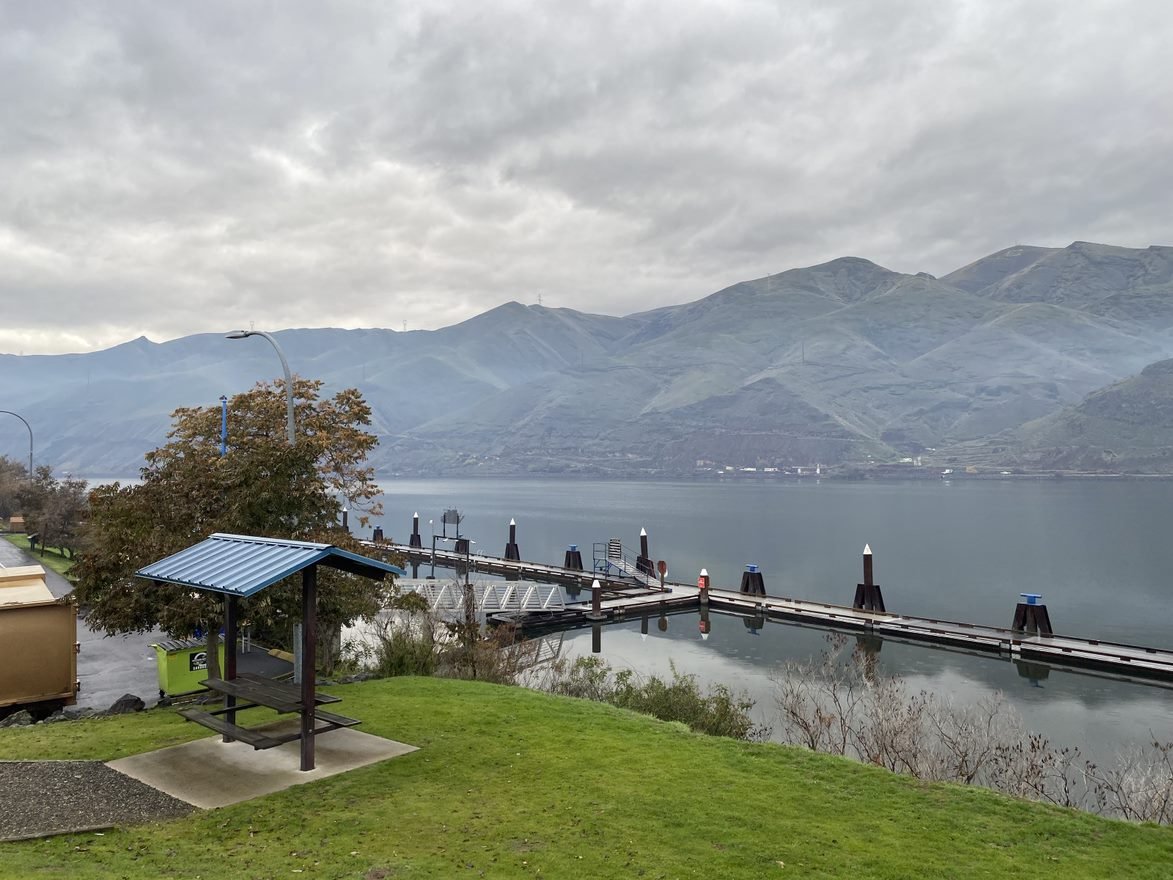Southeast Washington Ports: Hard at Work for Their Communities
By James Cockburn, Government Relations Manager
The week of November 6th – just my second on the job here at WPPA - Executive Director Eric ffitch and I undertook a whirlwind tour of Southeast Washington Ports. After visiting five ports in four days, I was left with a sincere appreciation for the value and economic impact that our ports have to communities on the eastern side of the state.
The trip began with a flight into Spokane and a meeting with Gary Ballew, Vice-President of Economic Development at Greater Spokane Incorporated, a close ally of WPPA and an economic development leader in Eastern Washington. A great discussion of current trends in economic development and green energy was a useful primer on topics that would continue to come up during the trip.
Bowyer Park & Marina at the Port of Whitman, which recently underwent upgrades.
The first stop was at Port of Whitman in Colfax, where Kara Reibold and her staff provided a rundown of the current projects being undertaken in the district. A tour of Port properties included recent marina upgrades at Bowyer Park which utilized port funds and an RCO grant to fund major dock improvements. Meanwhile, at the Pullman Industrial Park, recently-approved CERB funding will help the port build an expanded production facility with tasting room and restaurant space for a local brewery that can potentially serve the more than 4,500 employees who work at facilities within the industrial park. WPPA staff also visited the Port’s grain terminal along the Snake River at Almota which has the capacity to store over 3.7 million bushels of grain from local farms.
The next morning, we headed for Clarkston, where Chris Rasmussen from Port of Clarkston graciously gave his entire morning to WPPA staff to provide a comprehensive run-down of his port’s activities and issues related to cruise line operations, dockside electrification, and industrial park development. A tour of port properties was highlighted by visits to the cruise boat dock which hosts five cruise lines that bring several thousand visitors to the area each season. Eric and James also saw the port’s Turning Pointe development where projects ranging from alternative energy to workforce training could be sited, but where the port might need to help with permitting and build-to-suit options to potentially attract new tenants to the 44 acre site.
The Gateway Dock cruise ship terminal at the Port of Clarkston
After a beautiful drive through the rolling hills of the Palouse, we arrived in Dayton for a visit with the Port of Columbia. Executive Director Jennie Dickinson and Commissioner Seth Bryan provided an overview of the economic development activities taking place at the port, from their Rock Hill Industrial Park to the Blue Mountain Station Food Park. Blue Mountain Station is a food processing park that provides regional artisan food producers and other craft vendors with workspace to make and sell their products. Rock Hill Industrial Park is host to a variety of business tenants and is also the home for the broadband infrastructure that is providing low-cost, high-speed connectivity to the City of Dayton with expansion planned for other areas of the county. The port utilized a $2 million grant from CERB along with over $800,000 from the WA State Broadband Office to fund this project. This also provided one of the trip’s most vivid highlights: Eric and I happened to be at the port’s broadband colocation site just as a fiber provider was hooking up a new residential connection. Port broadband work in action!
James Cockburn, Jennie Dickinson, and Seth Bryan standing outside the Port of Columbia’s broadband infrastructure colocation site.
Just a short way down the road, the Port of Garfield in Pomroy was next to roll out the red carpet for we weary WPPA travelers. Diana Ruchert gave a complete tour of the port’s activities along with the City of Pomroy and Garfield County Fairgrounds. In addition to its popular RV park, the port leases a site at Central Ferry on the Snake River to the Pomeroy Grain Growers for barge access for local grain exports. The port also maintains a public-use boat ramp for access to the Snake River and is planning to seek funding support for improvements to ensure local residents have access to recreation.
We wrapped up our trip in Walla Walla, where Executive Director Pat Reay provided an overview of the vast array of initiatives that the Port oversees. One particularly exciting development is the creation of a Tax Increment Area along the Columbia River near Burbank & Wallula. The port plans to use the funds to build out the infrastructure necessary to support several large-scale industrial parks that are expected to bring hundreds of millions of dollars in tax revenue to the area. The Port’s Airport Business Park hosts a wide range of tenants, including government agencies, wineries, breweries, and community college facilities. The Port also manages Walla Walla Airport which is in the process of a major renovation to improve passenger experience and create more efficient security screening. We ended the trip by flying out on one of Alaska Airline’s daily flights to Seattle which connects the region with the rest of the world.
While daunting in distance traveled and aggressive in its tight timeline, this trip was immensely beneficial as we continue to build connections to our port members and see firsthand the diversity of the projects being spearheaded by port districts around the state. Rural communities in the area depend on ports to bring vital infrastructure and investment to assist private industry in making investments to create jobs, improve quality of life, and bring visitors to their communities. A grateful word of thanks to all those who hosted and took time out of their days to educate and show off their communities.


